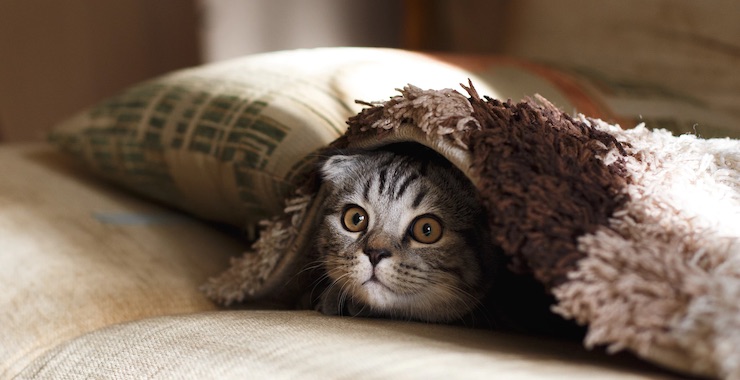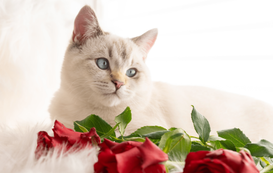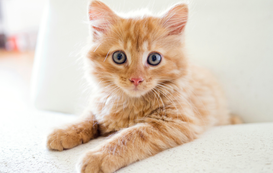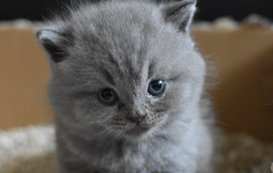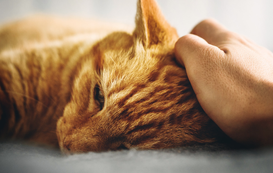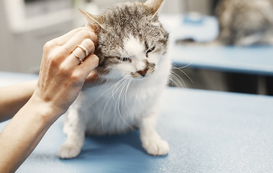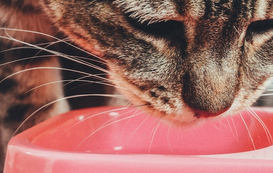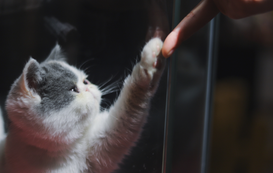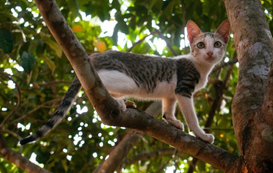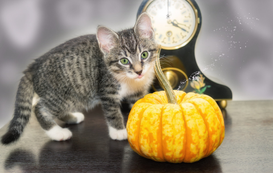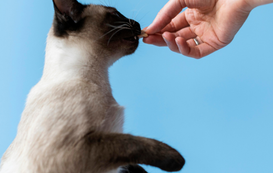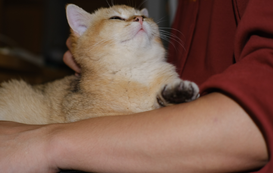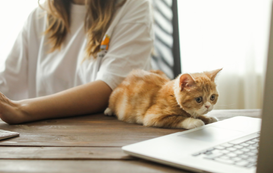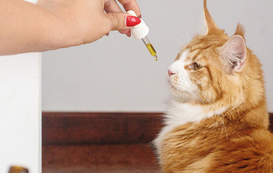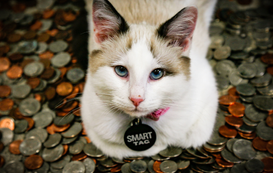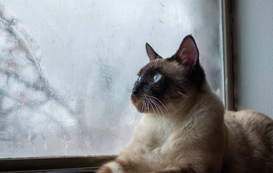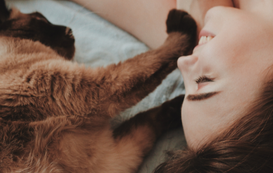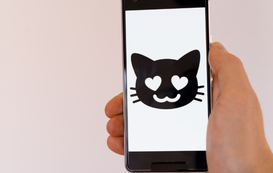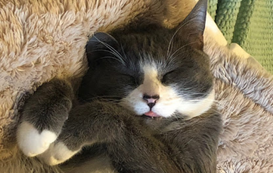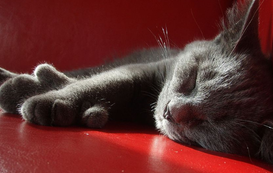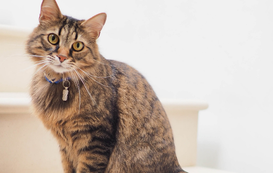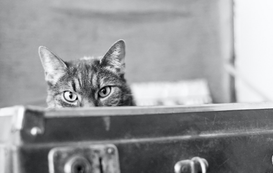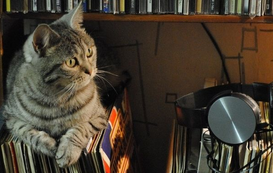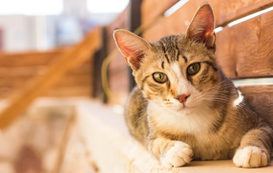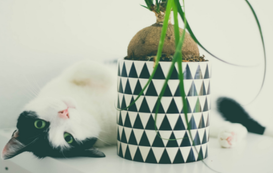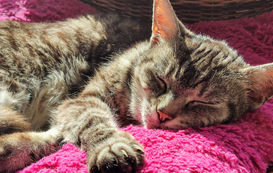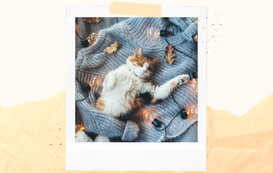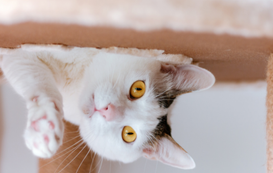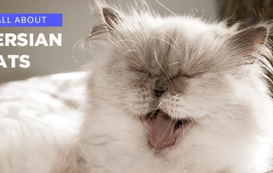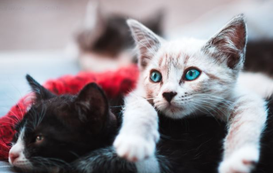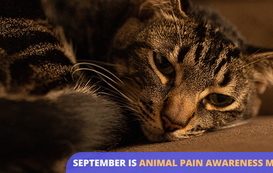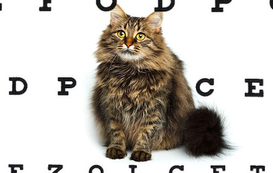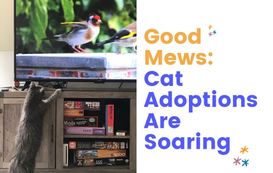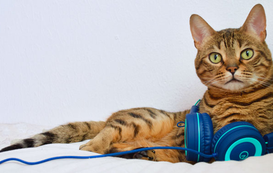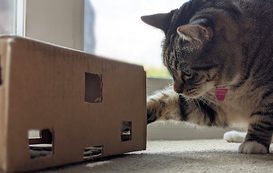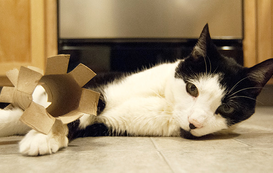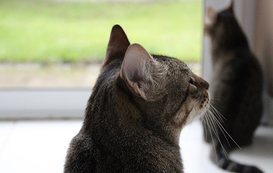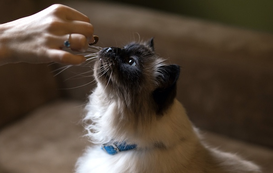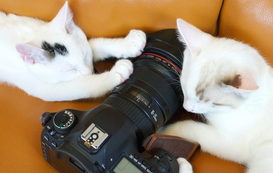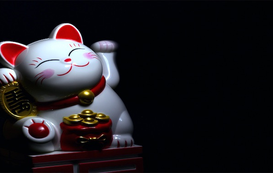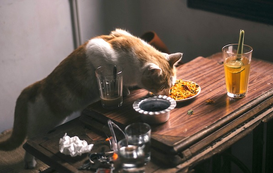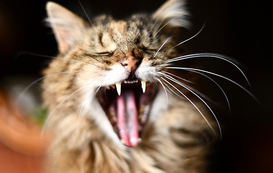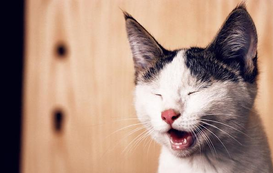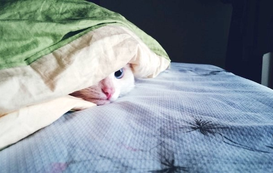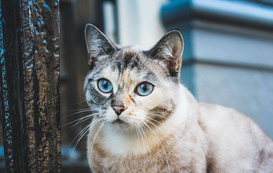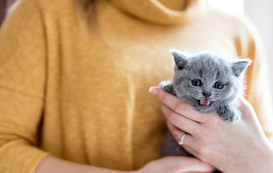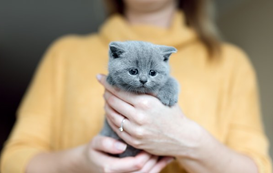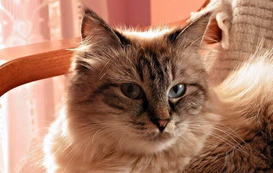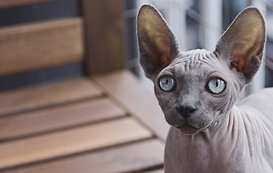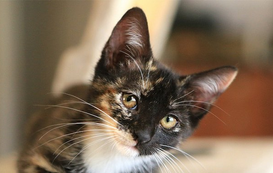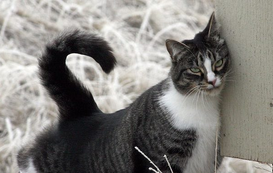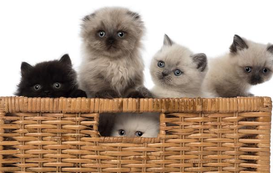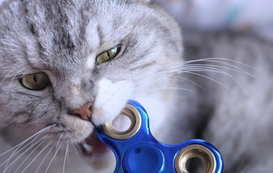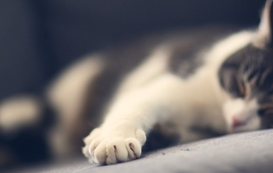Popular posts
10 Common Household Items You May Not Realize are a Risk for Your Cat
If you think about it, having a cat can be a lot like having a toddler. They’re curious, like to knock things over, poop a lot, and while they might not shove things up their nose, they do regularly put things in their mouth that they shouldn’t. I bet you can easily think of a time you yelled at your cat “stop chewing on that!” As cat owners, it is very important that we are conscientious of the things in our home that may pose a safety risk to our kitty cats. Cat-proofing your home might sound silly to some people, but anyone who has ever owned a curious kitten knows that this is a definite must-do.
There are a lot of things that can be dangerous to your cat, from different foods, to toxic plants, to household cleaners you may have in your kitchen or garage. A lot of them you may be familiar with, such as rat poison or chocolate (who hasn’t heard that one). Don’t worry, we will cover all categories of hazards later in our blog. But in this particular article, we are going to focus specifically on the everyday items you probably have around your home right now that you may not even realize are a threat to kitty. Let’s get to it!
1. Lilies.
This is technically not an “everyday item”, but lilies are SO TOXIC to cats that we feel they belong on this list, especially because so many cat owners do not even realize the risk. Ingesting lilies will likely kill your cat, even if they eat just a tiny bit. Every single part of the plant is extremely poisonous – the flower, leaf, stem, and even the pollen.6 Just grooming pollen from their fur can be fatal to cats. Lily ingestion will cause the kidneys to fail within 24-72 hours if not treated immediately and intensively.6 Please, if you own a cat, DO NOT HAVE LILIES IN YOUR HOME.
2. Dental Floss.
Everyone has this in their home (or at least they should… now don’t make us call your dentist). So let’s say curious kitten gets a little tasty taste of the minty goodness. Mmmm. Kitty decides “That tastes good, I’m gonna chew on that. Oops, I swallowed a little… uh oh.” This is what your vet is going to call a linear foreign body. The problem with linear foreign bodies is when one end of the linear object (i.e. string-like object) gets stuck, usually around the base of the tongue, and the free end is swallowed.2 The intestines are going to continue to do their job, contracting and relaxing to try to move stuff along. Except for that string is anchored now, and is not going to be moving anywhere. Instead, the intestines are going to bunch up around the string. Think of it like a drawstring, and the intestines like the fabric around the drawstring.2 This continual bunching motion against the floss over time can cause tears and perforations in the intestinal tract, which is a really dangerous problem.2 Swallowing a linear foreign body will undoubtedly require surgery. Oh, dear, dear, dear.
3. Sewing Thread and Needles.
Same deal as with dental floss. String = bad. Don’t eat it, kitty. But now there’s a needle attached to the end of it. Yikes. That’s definitely going to get lodged somewhere along the GI tract, poke holes in places where there shouldn’t be holes, and without a doubt prevent the intestinal tract from passing the needle and thread.8 So keep your sewing kits safely stowed please, this does not sound pleasant.
4. Rubber Bands and Hair Ties.
Yes, it may be cute to watch Little Meow bat around your hair tie. Cats are adorable when they play. But can you keep track of every single hair tie they’ve ever thieved? Probably not. So where do all the hair ties go? Under furniture, yes. But what if Little Meownster ate one… or ten… or more? (Some cats have pica, I swear it). Will he pass it? Maybe.8 But if there are a bunch of rubber bands in the intestines, they are either going to get so knotted together that they cause an obstruction, or stretch and tangle together, becoming a linear foreign body issue like floss or thread. And as you may have heard, that is very problematic.
5. Plastic Bags.
When you were a kid, did you ever wear one as a cape or a parachute? Yup, guilty right here. Well, cats may not have the same imagination, but the curiosity is certainly there. Oooh, especially when it makes that crinkle sound that kitties just love! But do you remember ever hearing mom say “keep that away from your face, you could suffocate!”? Same rule applies to kitties, except more so because of their small size. If their head gets stuck in the handle and they start to freak out (as stuck cats do), they’re going to try to wriggle free, and before you know it, that bag is so twisted up around them, they’re in real trouble if no help is nearby. Not to mention that if they decide to eat part of the bag, you could be looking at a nice hefty vet bill to remove a GI obstruction.
6. Electrical Cords
Ever catch your cat chewing on your phone charger? I know I have. Cats are weird, man. Not all cats are going to bother with cords, but some will. And think of all the things in your home that have a cord. Like. So. Many. Things. Just be sure that all cords are neatly tucked away out of kitty nibble reach. I’m pretty sure cats don’t like being electrocuted.
7. Essential Oils
Yep. I know. This one is surprising. Think of active diffusers that “mist” the essential oil into the air, or the warming dish you have sitting on the coffee table. If that oil gets on your cat’s fur, when they groom they are going to ingest it, and it’s going to go to the liver to be metabolized. Problem is, cats don’t metabolize essential oils so well, so your cat can actually go into liver failure.4 Passive diffusers like reed diffusers are a bit safer, but can still cause respiratory irritation to cats’ sensitive sinuses and are still a threat if they spill or leak.4 There are several essential oils that are known to be toxic to cats, including wintergreen, citrus oil, Ylang Ylang oil, and tea tree oil, to name a few.4 But there are so many essential oils out there, it is not yet known how many more pose a threat. So be safe. Either get rid of them, or use them in rooms kitty can’t access.
8. Himalayan Salt Lamps
So this one is a relatively new finding.3 No, the lamp isn’t going to Brave Little Toaster-style attack your cat, but if your cat gets a lick of the lamp, he may find it hard to stop. Apparently for some cats, this is their thing.3 If your cat ingests too much salt (and “too much” is not really a whole lot), they can fall victim to sodium chloride toxicity, aka: salt poisoning. This can cause disorientation, vomiting, lethargy, seizures and even death.5 Yes, your cat may show no interest in the lamp, but better to play it safe and keep this one out of kitty’s reach.
9. Coins, Especially Pennies.
If you discover your kitty ingested a penny, take them to the vet immediately. Pennies minted after 1982 contain zinc.7 When the penny enters the stomach, the stomach acid breaks down the zinc, which is then absorbed into the bloodstream where it destroys red blood cells and causes liver, kidney and heart failure.1 So it is imperative to get that penny out stat. FYI, no other U.S. coins contain Zinc,7 but it’s probably best for kitty not to swallow those either, as they could get stuck trying to pass through the GI tract. Foreign objects stuck in the GI tract for too long can actually cut off blood flow to part of the intestine, causing the intestinal tissue to die.3 Doesn’t sound like much fun for Fluffy.
10. The Trash Can
Did this one raise an eyebrow? No, the trash can itself is not dangerous. It’s what’s inside that could be. I don’t know all of the things that are in my trash, do you? Dangerous things, that’s what. Chicken bones, batteries, that dental floss you used this morning, or some delicious leftover food and a nickel. Random, I know, but this actually happened to me. I learned firsthand that it is very important to have a trash can that is stored away or sealed and un-tippable. When my cat Caesar was a young 2-year-old curious tot, he wasn’t feeling so well. He hadn’t eaten much in two days, was lethargic, and just not acting himself. So I took him to the vet. They took an x-ray, and there, stuck in his small intestine, was a big circular object, about the size of a bottle cap. So Caesar was sent straight to surgery where they removed the foreign body, which turned out to be a nickel. Ouch, can you imagine swallowing that? Now why in the world would my cat swallow a nickel? After thinking about it, it dawned on me that I had swept up a coin just a few days prior and thinking nothing of it, dumped it into the trash along with whatever else I swept up. 2-year-old Caesar had a bad habit of tipping over the trash can, and he probably got to eat some delicious leftover crumbles that happened to come with an unexpected side of nickel. Sigh, cats. (P.S. He recovered just fine from surgery and is now a happy, healthy 11-year-old man cat. Oh, and I still have his nickel.)
Thanks for reading! If you’re looking for more information on Cat Health Hazards and other cat health tips, be sure to keep an eye on Meowtel’s blog for upcoming articles. Many Purrs!
- Angle, DVM, MPH, C. (2019). Zinc. Retrieved from https://www.petpoisonhelpline.com/poison/zinc/
- Barnette, DVM, C. (2017). Linear Foreign Body in Cats. Retrieved from https://vcahospitals.com/know-your-pet/linear-foreign-body-in-cats
- Becker, DVM, K. (2017, July 18). Salt Toxicity in Cats. Retrieved from https://www.barkandwhiskers.com/
- Benson, DVM, K. (2018, March 16). Essential Oils and Cats. Retrieved from https://www.petpoisonhelpline.com/blog/essential-oils-cats/
- Pet Poison Control. (2017). Salt. Retrieved from https://www.petpoisoncontrol.com/portfolio/salt/
- Pet Poison Helpline. (2013, July 26). Are Lilies Poisonous to Cats? Retrieved from https://www.petpoisonhelpline.com/pet-safety-tips/are-lilies-poisonous-to-cats/
- Richardson, DVM, J. A., Gwatlney-Brant, DVM, DABVT, S. M., & Villar, DVM, PhD, D. (n.d.). Zinc Toxicosis from penny ingestion in dogs. In Veterinary Medicine(Vol. Feb. 2002). Veterinary Medicine Publishing Group.
- Ward, DVM, E., & Panning, DVM, A. (2017). Ingestion of Foreign Bodies in Cats. Retrieved from https://vcahospitals.com/know-your-pet/ingestion-of-foreign-bodies-in-cats

